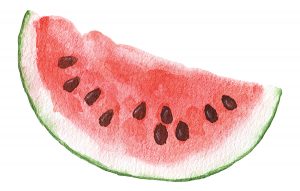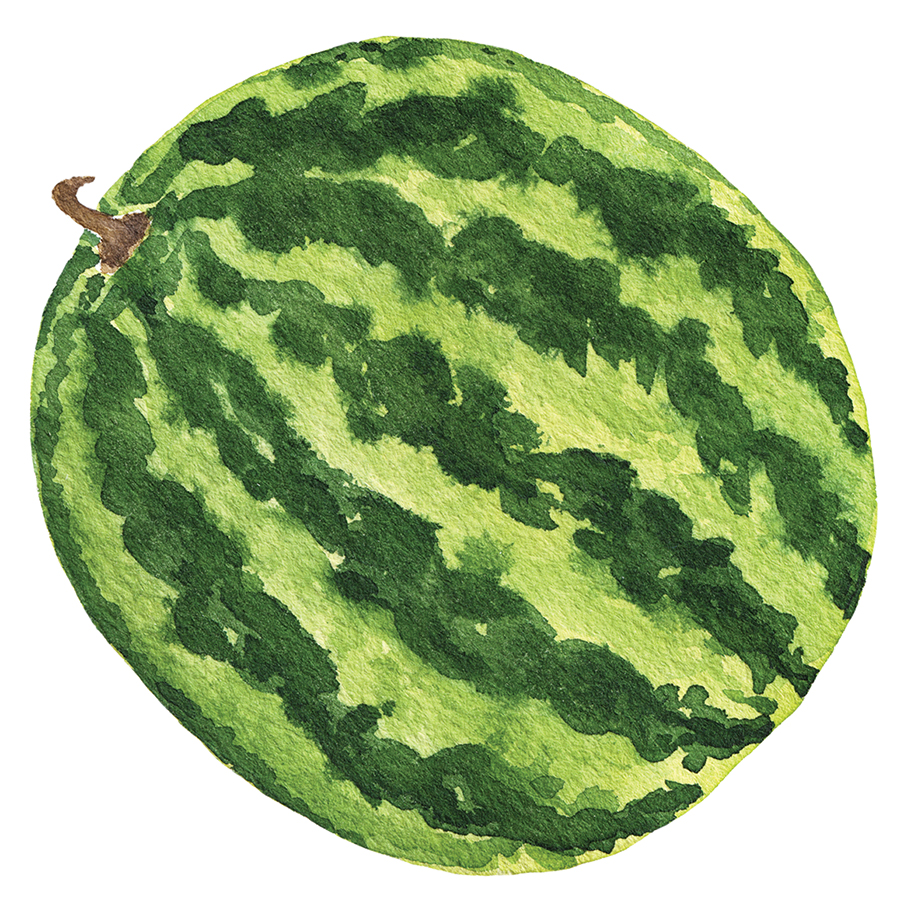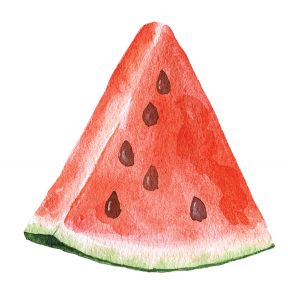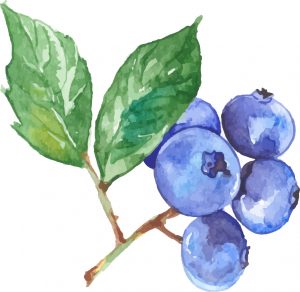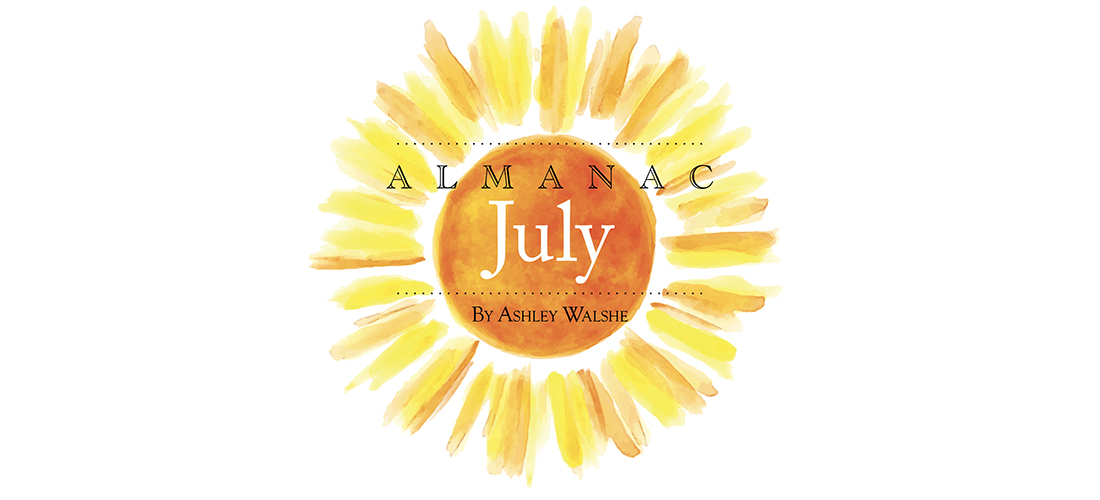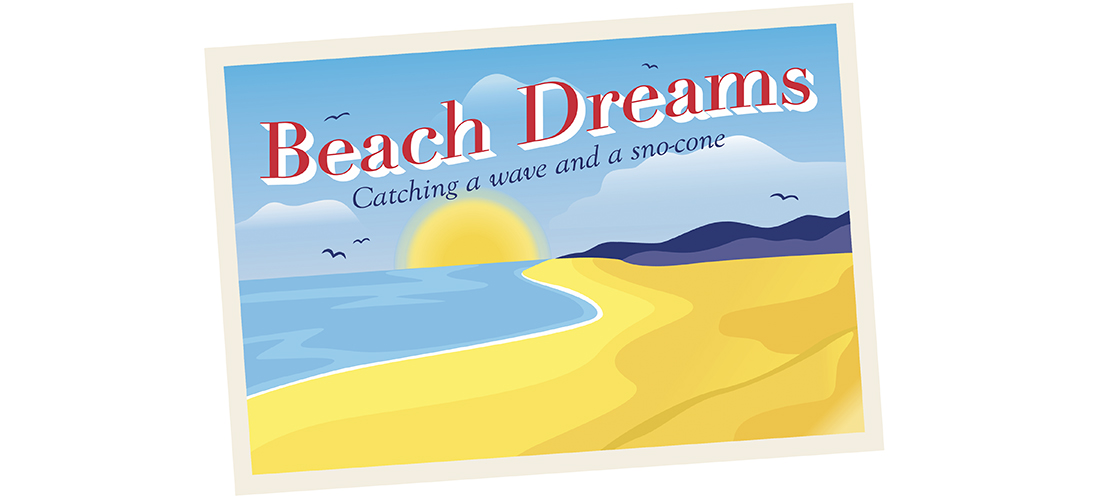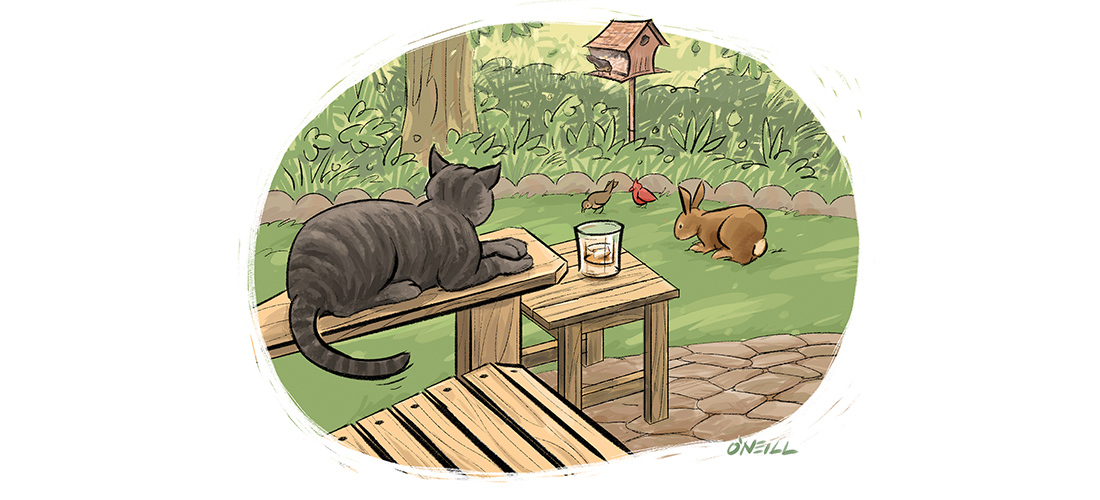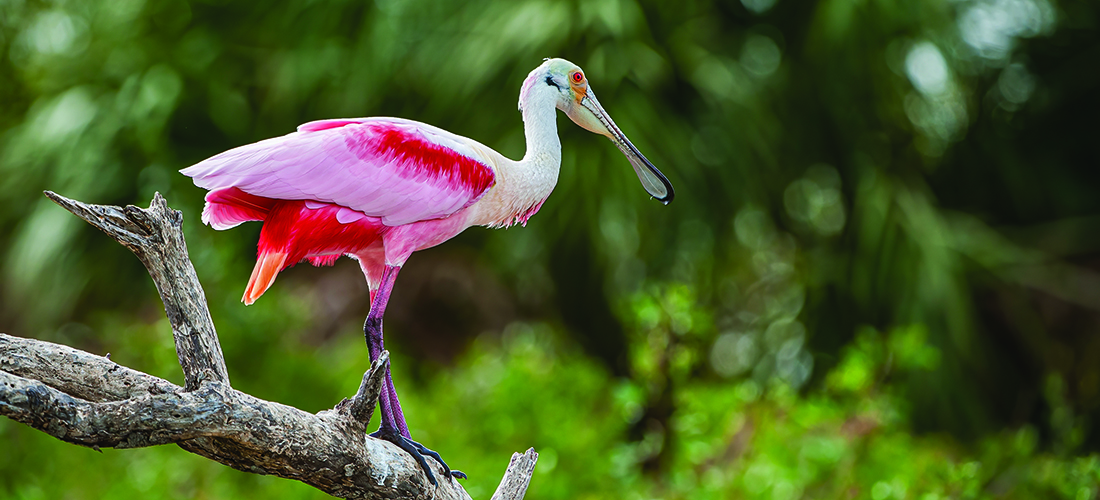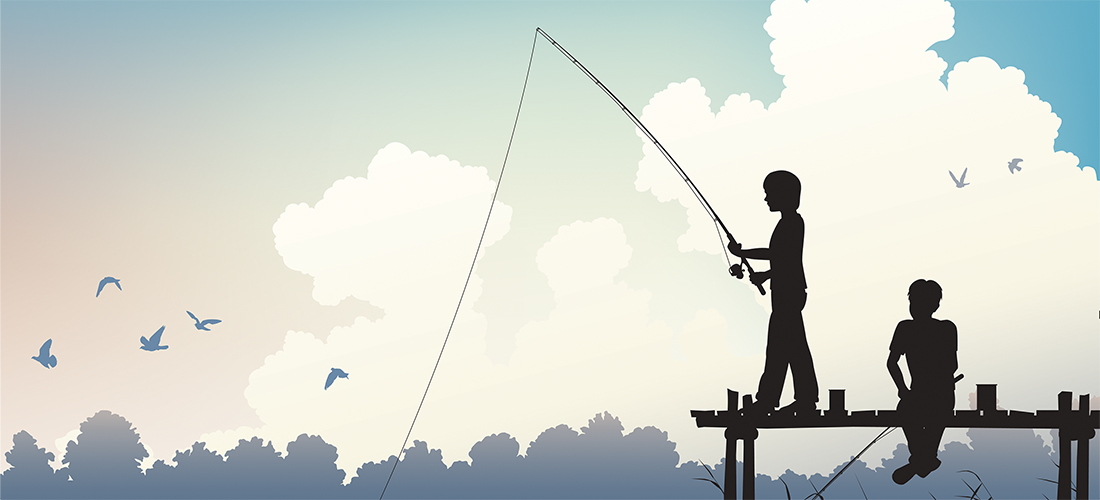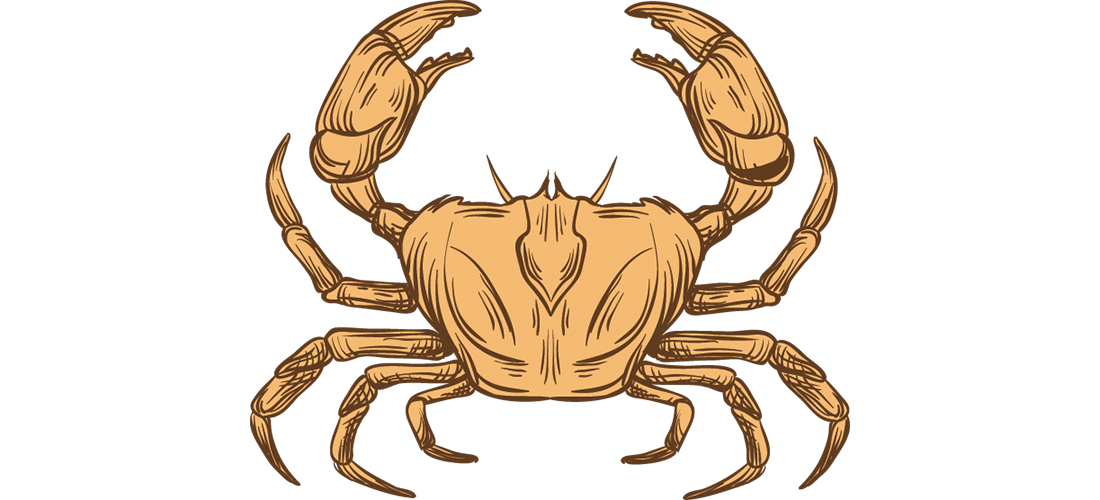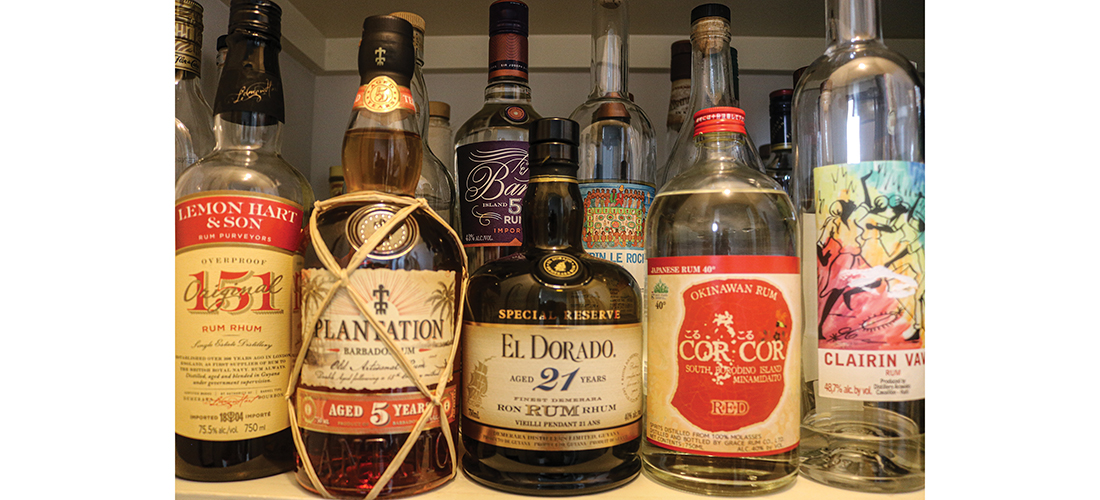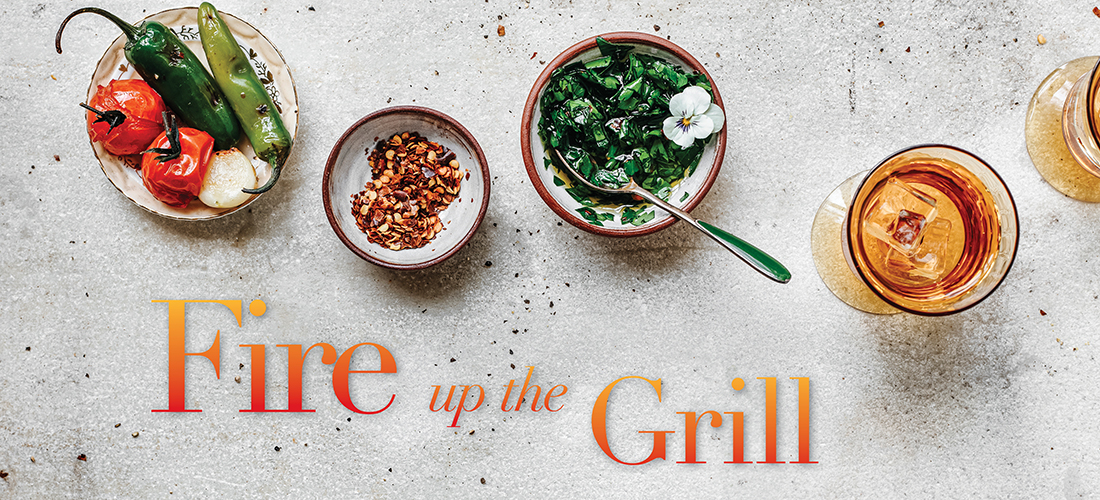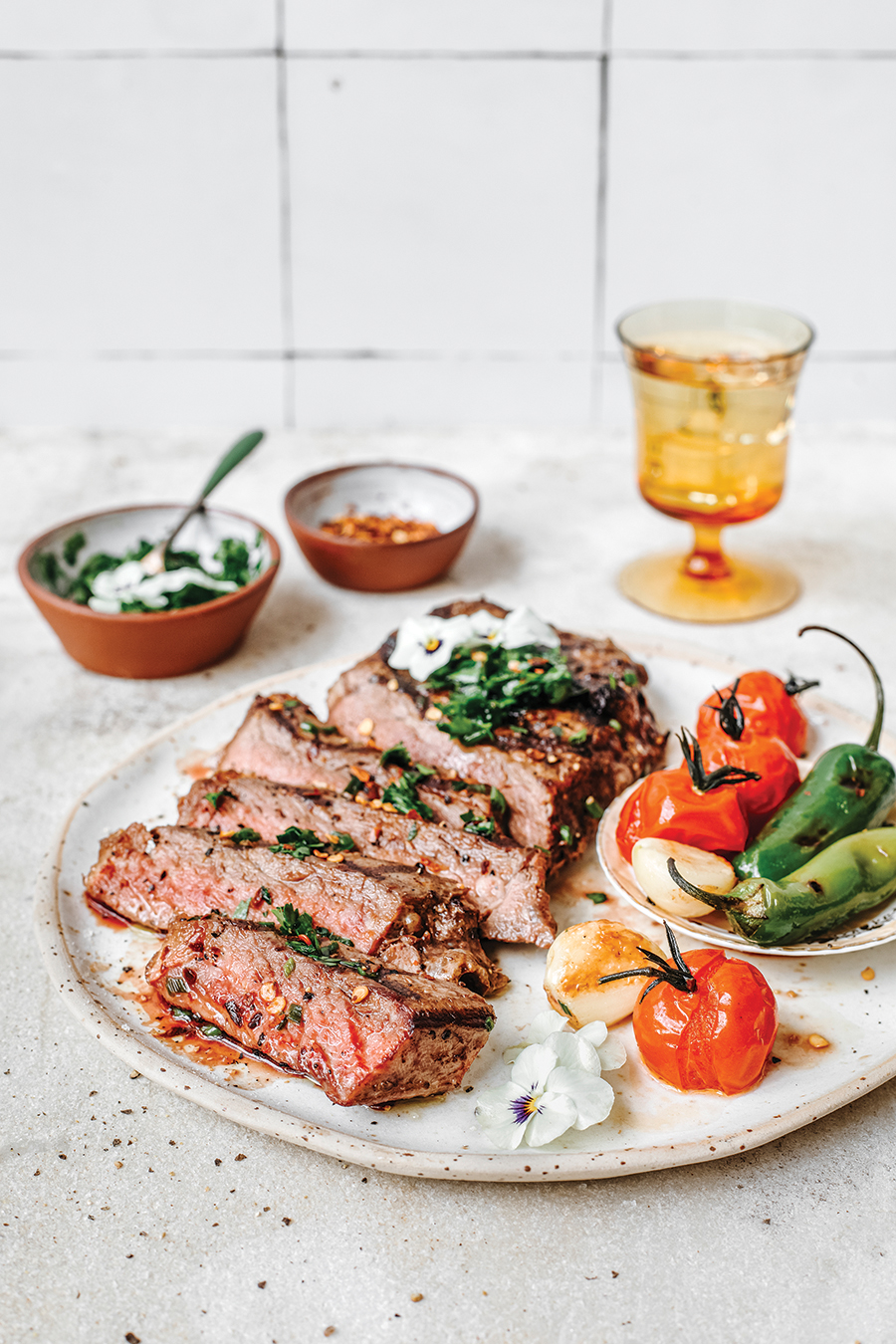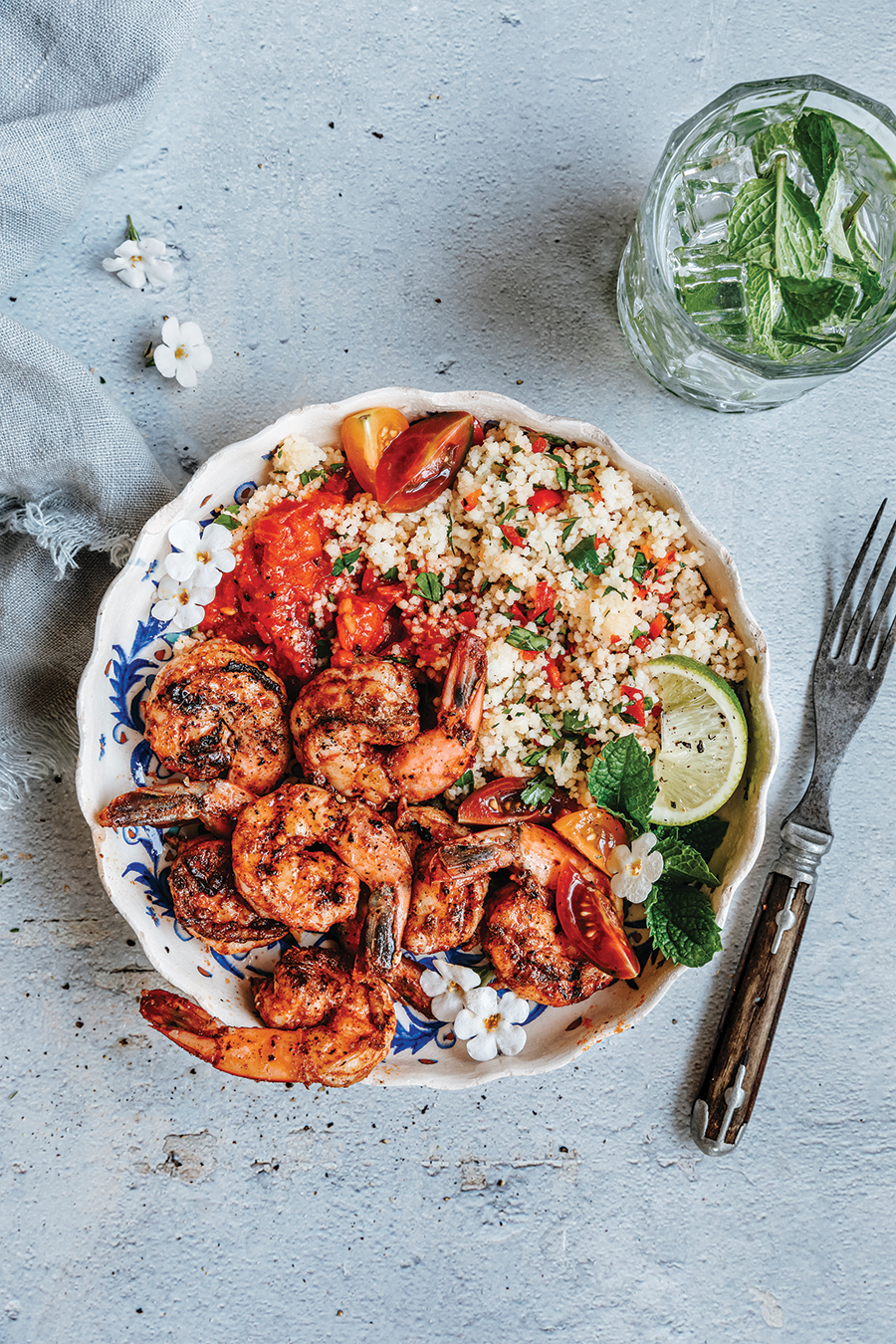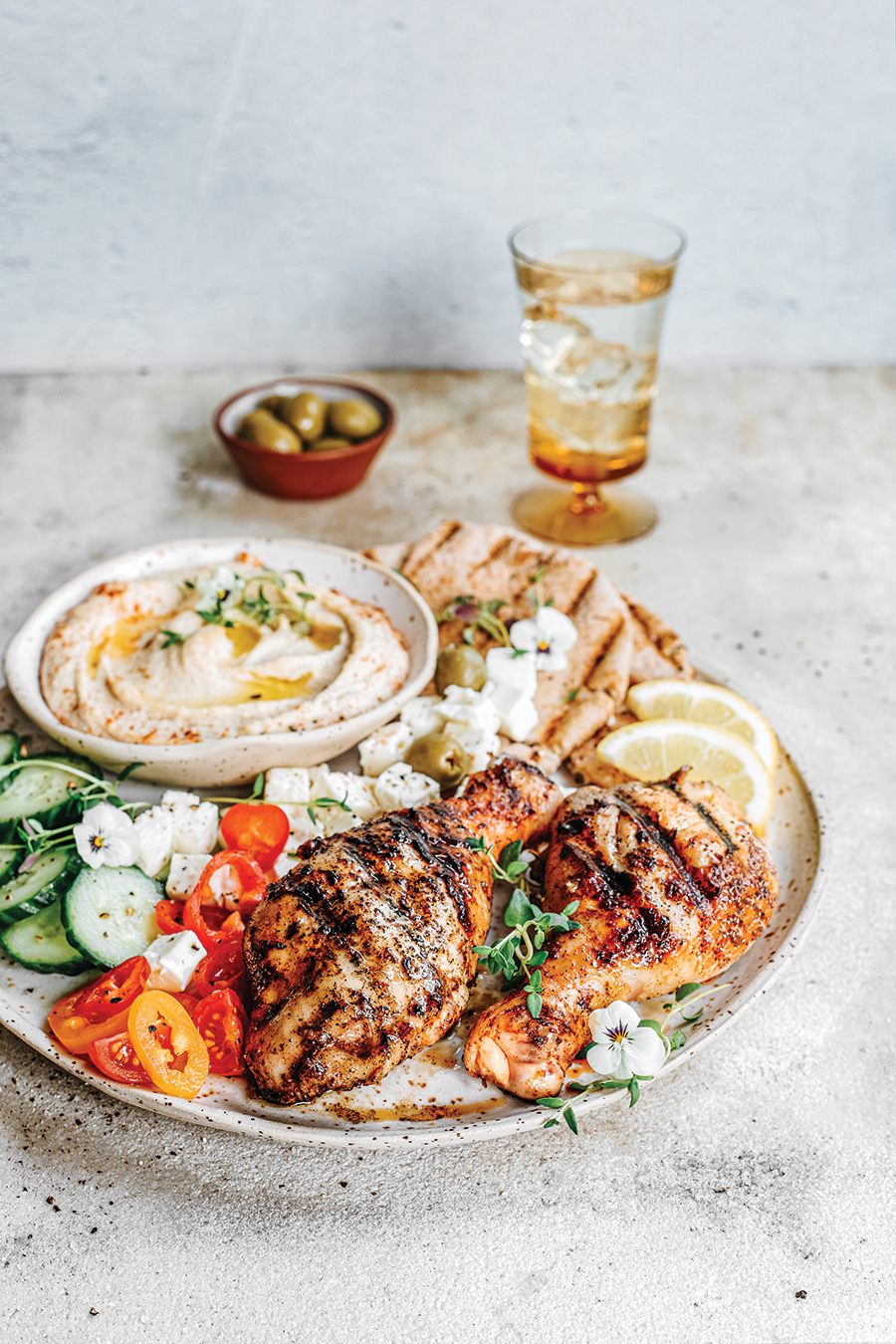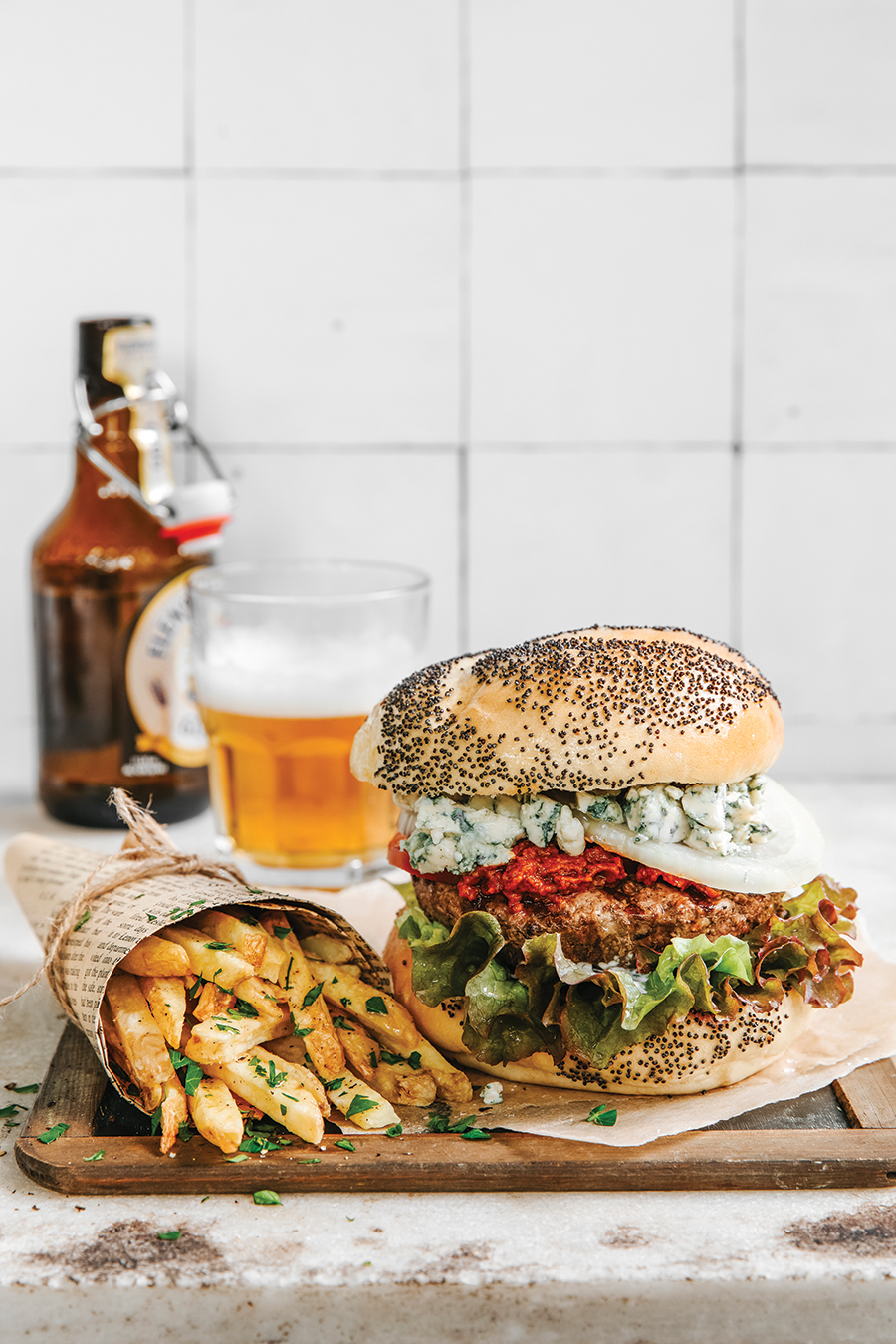Former major leaguer manages new team
By Jim Moriarty • Photographs by John Gessner

Near the end of the baseball classic Bull Durham, strong-armed Nuke LaLoosh goes looking for his catcher, Crash Davis, to tell him he’s been called up to the majors. He finds Crash in a pool hall owned by Sandy Grimes, who’s sitting with his back to a wall and a cue stick in his hands.
“Let’s get out of this dump,” Nuke says.
“You callin’ my place a dump?” Grimes jumps to his feet.
“No. He’s not. He’s not. All right?” Crash smooths it over. He turns to the phenom he’s been nursemaiding through the minors and says, “Do you know who this is? This is Sandy Grimes. Sandy Grimes hit .371 in Louisville in 1965.”
Grimes is quick to correct him. “.376.”
“I’m sorry,” Crash says, genuinely apologetic. “He hit .376. That’s a career, man. In any league.”
The chances are pretty good that, even when the full roster of the brand-new Sandhills Bogeys baseball team was introduced to their manager, Bernie Carbo, few if any of them knew who he was. And that’s OK, even if he was way, way better than Sandy Grimes.
The Bogeys are the newest “franchise” in the Old North State League, where 13 teams compete for a couple of months in the summer the old-fashioned way — with wooden bats — just like the pros. They’re playing in a park built especially for them on the campus of Sandhills Community College, and the only aluminum you’ll find won’t be in a bat, it’ll be in a soda can. The players on the Bogeys can be forgiven if they didn’t recognize Carbo’s name. They’re in their late teens and early 20s, guys playing in college or getting ready to, and the man they were being told was guiding their summer team is 74. Carbo played in the big leagues for 12 seasons with five different clubs in both the American and National Leagues. He moved to Southern Pines from Mobile, Alabama, about 18 months ago with his wife, Tammy, a retired educator. When they were first married, Bernie adopted Tammy’s son, who took the name Bernardo Christopher Carbo Jr., and is now a psychologist and an officer at Fort Bragg.


“Bernie’s a trip,” says Alec Allred, who started the Old North State League in 2018. “Anytime we can have a former big leaguer that is the manager of one of our teams, obviously you can’t say no to that. He’s an incredible baseball mind. I enjoy just sitting around listening to his stories. He’s a legend, truly. The players are going to enjoy playing for him. They get to be around it every day this summer.”
Sandy McIver, who was the pitching coach at Union Pines High School, and Tom Shaffer, who coached baseball at Georgetown University, will be doing most of the heavy lifting when it comes to coaching the team, but it would be a mistake to think of Carbo as little more than a conversation piece. If your goal is to get better and you have a chance to talk hitting with a guy who has been teammates with Frank Robinson, Pete Rose, Johnny Bench, Lou Brock, Carlton Fisk, Jim Rice, Carl Yastrzemski, Fred Lynn, Willie Stargell and Dave Parker; a guy who has run a few questions about the art of hitting past Ted Williams, Henry Aaron and Stan Musial; a guy who has stood in the batter’s box against Bob Gibson, Jim Palmer and Nolan Ryan; you might be able to learn a thing or two.
And, if not, the stories are worth the price of admission.
“First time I faced Nolan Ryan I heard the umpire go ‘Strike one’; ‘Strike two’; ‘Strike three.’ I turned around to the umpire and I said, ‘I didn’t see any of those pitches.’ And the umpire said, ‘Neither did I, but they sounded good.’”
Versions of that story have been told about every pitcher whose velocity creeps into triple digits — including Bob Feller and probably going all the way back to Walter Johnson — but it’s a helluva a story, and even if it’s not 100 percent original, it sounds good, just like Ryan’s pitches. “Walk in the clubhouse, you’d see all the guys in the training room. We all knew who was pitching,” Carbo says. “Nolan Ryan. Nobody wanted to play. He struck me out 19 times in a row. He threw me a change-up and I hit a home run.
“Jim Palmer gets me out for five years,” Carbo continues, the memories stirred together like cream in coffee. “I get a base hit off him and he comes to first base and says, ‘I want to shake your hand.’”
Palmer even autographed a baseball for him. It said Jim Palmer 0-for-5 Years.
Those are the stories Carbo tells on himself. But if you think he couldn’t hit because a couple of Hall of Famers gave him fits, you’d be mistaken. The first major league draft was in 1965. Rick Monday, Billy Conigliaro and Ray Fosse were in it. So was Bernie Carbo, picked 16th. Johnny Bench was taken 36th. Carbo’s first full year in the majors was 1970. He hit .310 with 21 home runs and 63 RBIs and was second in the Rookie of the Year voting. That’s a career, man. In any league.
And he just happened to have a starring role in one of the greatest baseball games ever played. You can look it up. Game six of the 1975 World Series between the Boston Red Sox and the Cincinnati Reds. Carbo was on the Red Sox, but he’d previously been a Red for four seasons. He knew both dugouts intimately. The Reds had Pete Rose, Tony Perez, Joe Morgan, Johnny Bench, Davey Concepcion and George Foster. The Red Sox had Carlton Fisk, Fred Lynn, Carl Yastrzemski and Jim Rice, who couldn’t play because he was injured. Altogether there were six Hall of Famers in the series, seven if you count Reds manager Sparky Anderson.
With Cincinnati ahead three games to two in the series and leading in game six, 6-3, Carbo was sent in to pinch hit in the bottom of the eighth against reliever Rawley Eastwick. In 2015 the National Baseball Hall of Fame brought Fisk and Eastwick together on stage to reminisce about the game. It was Fisk’s home run that hit the left field foul pole (now named in his honor) in the 12th inning that ultimately won it for the Red Sox. They lost the series the next day. The film clip of Fisk waving the ball fair as he hopped and leaped and clapped his way down the first base line is a classic. It’s more famous in Boston than Sam Adams. But it was Carbo’s three-run blast that gave him the chance.
With the count 2-2, Carbo fouled off a couple of pitches and looked overmatched doing it. “Carbo had one of the worst swings that a major league ballplayer could have ever had; he just barely fouled the ball off to stay alive, or he would have been out,” Fisk said at the Hall of Fame. “And then the next swing it’s the best swing you could ever see in a game.” The drive easily cleared the center field wall, traveling somewhere between 420 – 450 feet, setting up Fisk’s heroics. “The game started on October 21st and ended on October 22nd,” Fisk said.
In the top of the 10th Rose came up to hit, looked back at Fisk and said, “This is some kind of game, isn’t it?” Undoubtedly there are a few expletives omitted in that telling, but the sentiment was sincere enough. Later, Rose told his manager it was the greatest game he ever played in.


Hitting advice, however, isn’t the only way Bernie Carbo can help the Sandhills Bogeys. He can tell kids what not to do, too. Carbo’s self-published biography is titled Saving Bernie Carbo. It’s written with a psychologist, Dr. Peter Hantzis, using an unusual format. Hantzis does a brief introduction of each chapter; Carbo talks the reader through it; and, at the end, the doctor makes “educational comments” evaluating Carbo almost as if he were making notes about a patient. Hantzis still uses the book in the psychology classes he teaches at the University of Massachusetts Lowell. “For Bernie the most important thing was finding his faith. That’s what really saved his life. And I agree. I think that’s exactly what happened,” Hantzis says.
During his talk at the Hall of Fame, Fisk said that Carbo was more than offbeat, “he was just off.” Carbo’s autobiography explains some of the reasons why. His father was a cruel man, a fighter in a circus, and he beat both Bernie and his mother. He was a man with unrealized baseball ambitions of his own who simultaneously lived through his son while constantly berating him.
“I became a drug addict and an alcoholic,” Carbo says of his years in the majors. “When I got to the big leagues, I quit working. What happened to me? I got worse.” Carbo can be a powerful force when it comes to explaining to young men how to honor their God-given talent.
His mother tried to commit suicide when he was a boy. She succeeded when he was a grown man. “My mother commits suicide. My dad dies. I’m going to commit suicide,” Carbo says. He was saved by a couple of former teammates, pitchers Bill Lee and Ferguson Jenkins, and a Baptist minister he shared a Tampa hospital room with. “God put me with a preacher,” says Carbo. And it took.
“Bernie Carbo did not receive treatment for his mental health and substance abuse problems until he was in his mid-40s,” writes Hantzis in Saving Bernie Carbo. “Sadly, even if Bernie had as a child been identified as a victim of abuse and trauma, his treatment options would have been limited. In the 1950s child psychiatry, child psychology, social work and family therapy were in their early stages, and unavailable to many children.”
Clearly, when it comes to the art of hitting, Carbo can be a constructive influence for players who want instruction. Not everyone on the roster will, and he knows that. The Old North State League isn’t necessarily a steppingstone to anything other than a summer of fun. “They’re coming to this league to have fun, to enjoy it and play baseball,” says Carbo. “But you never know who’s watching. David Justice went to Thomas Moore University. They were playing a Division I school and the Atlanta Braves had two kids they wanted to see on the Division I team. David Justice hit two balls out of the park. The guy from Atlanta calls the Braves up. ‘Thomas Moore has this kid and he’s just unbelievable.’ Next thing you know he’s the No. 1 draft choice. Plays in the World Series.”
But if you do want a little help swinging the bat, there’s probably no one better in the Old North State. “These guys obviously understand the sport at a different level. You know his spring training coach was Ted Williams. Can you imagine?” says Hantzis. “Bernie has a great style of communicating. He looks you right in the eye. He’s so sincere and he’s so interested in you. Bernie is unique. This is a great man.”
Sometimes, you do know who’s watching. One of the catchers on the Bogeys is Riley Cameron, who graduated from Union Pines in 2017, played two seasons at Wheeling University and will transfer next year to Catawba College. “I play summer ball every summer and I haven’t gotten to play close to home since I’ve been in college,” Cameron says, “so I’m glad that I can play in front of my family and friends again.”


Allred, who is an associate scout for the Texas Rangers, sees opportunity in the Sandhills because of its strong high school baseball programs and thriving tourist economy. “It’s just a perfect market for a baseball team,” he says. “Our players are at the forefront of our thoughts in terms of how we try to do everything, but we have started focusing more and more on the fan experience. That’s why we’re so excited about having this team in the Sandhills. We really want to try to go to a different level and incorporate a lot of what minor league baseball does in terms of the between-inning promotions and stuff like that to really get the fans engaged. This is almost going to be a pilot team for how we’re going to operate in the future.”
Besides knowing when to look for the curve and when to call it a night, Carbo can offer at least one more piece of wisdom. The first time he was getting ready to hit against the Cardinals Hall of Famer Bob Gibson, Carbo was in the on-deck circle but began creeping closer and closer to home plate, taking practice swings, trying to time Gibson’s pitches. (Just for context, in 1968 Gibson’s stat sheet read like this: He was 22-9 with an ERA of 1.12 and pitched 28 complete games, including three in the World Series. And you simply did not mess with Bob Gibson.)
“The ball goes whoosh!” Carbo says, turning his head quickly. “I go back to the bench. ‘Sparky, that guy just threw at me.’ When I got traded to the Cardinals, I got to know Bob a little bit. ‘Bob, do you remember throwing at me in the on-deck circle? He says, ‘Yeah, I missed you.’ I ask him ‘Did you intend to hit me?’ He says, ‘Yes.’”
The upshot is, you need to find those places in life where you’re safe. It took Bernie Carbo more than 40 years to find his. PS
Jim Moriarty is the Editor of PineStraw and can be reached at
jjmpinestraw@gmail.com.
